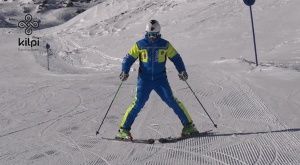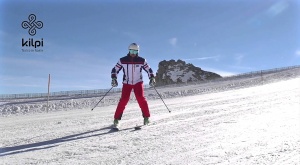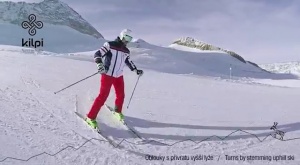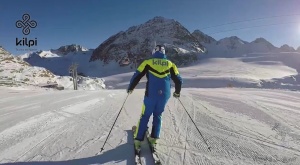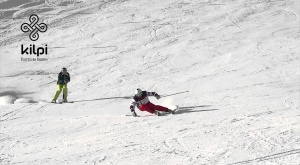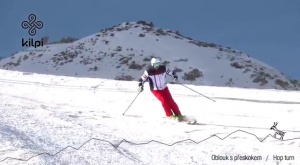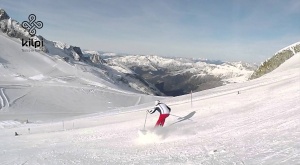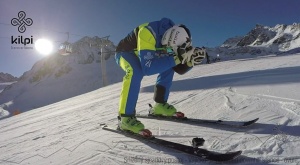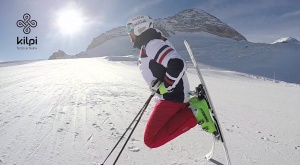 Manipulations, turnovers, hikes
Manipulations, turnovers, hikesMedium to long radius carved turns
Purpose of the turn:
- Dynamic and sporting ride
- Turns that shift the skis on the edges with a medium or long radius
- Expanding your skiing for higher level
Terrain:
- Mild slope, medium and steep slope
Description:
arved turn is now perceived as a basis for sporting ride under various conditions. Due to shaped skis, their sidecut geometry and design, we can ride on the edges (under certain conditions, which are expanded with the gaining of our higher skills)
Today we understand the carving as turns that shift skis on the edges. We adjust their shape to the slope gradient, difficult terrain and speed.
On the mild slopes open turns with a longer radius are used, shifting the skis on the edges without strong vertical movement and without using a ski pole - low dynamic movement.
As steepness of the slope gradually increases, we increase dynamics of our movement and the range of vertical movement with stronger pressure on skis. We lean our body to the inside of the turn and potentially use ski poles for keeping the proper rhythms of our ride.
We initiate a turn along the fall line and keep a minimum width of stance is the same as the width of the pelvis; the width of stance is expanded according to the speed and slope gradient. Skis are in constant contact with the snow surface.
Turns can be short or long, due to the slope gradient and terrain conditions.
Phases of the performance: By bending our knees diagonally we will weight the front of the skis and at the same time set skis on the edges. During the turn, we make the centre of gravity lower and increase pressure on the skis and on the edges, and we also increase the level of edging and incline our body. At the end of the turn, we gradually release the pressure on the centre of gravity and tilt skis over the base surface to the opposite edges. And then we join next turns in the same performance.
The most common errors:
- Backward lean of a skier, or centre of gravity set too back
- Riding your inside ski
- Insufficiently dynamic over-edging in the turn
- Too narrow stance
- Skidding through the shaping phase of the turn

